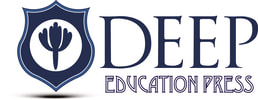Dr. Merrie Koester

Merrie Koester, Ph.D., Science educator and author of the nationally implemented Agnes Pflumm science education novels, has been bringing students to science through literature and the creative arts for the last 25 years. A native of Charleston, S.C., and a Phi Beta Kappa graduate of Furman University, Dr. Koester first began developing curriculum for teaching science through the arts as part of her masters’ research at the University of Hawaii in 1990. At that time, she says, her approach to teaching science was so far outside of the channel of mainstream education that she often found her “radical” self standing in the shoals. Her masters’ thesis, Science and Art Together Again, seemed likely to remain a fantasy. Over the next twenty years, while working as a middle school science teacher, she worked tirelessly to facilitate professional development workshops on teaching science through the arts, speaking at district, state, and national level Science education conferences. She then took a position as an adjunct professor at the College of Charleston, teaching Science methods to elementary and middle school pre-service teachers.

A key feature of Dr. Koester’s curriculum is the deepening of Science pedagogical content knowledge through the practice of what she calls performative narrative drawing and the creation of “Know”tations. This book is derived from her doctoral research, sponsored by the University of South Carolina Center for Science Education,for which organization she developed Project Draw for Science, a collaborative action research initiative for communicating meaning in Science through drawing.
